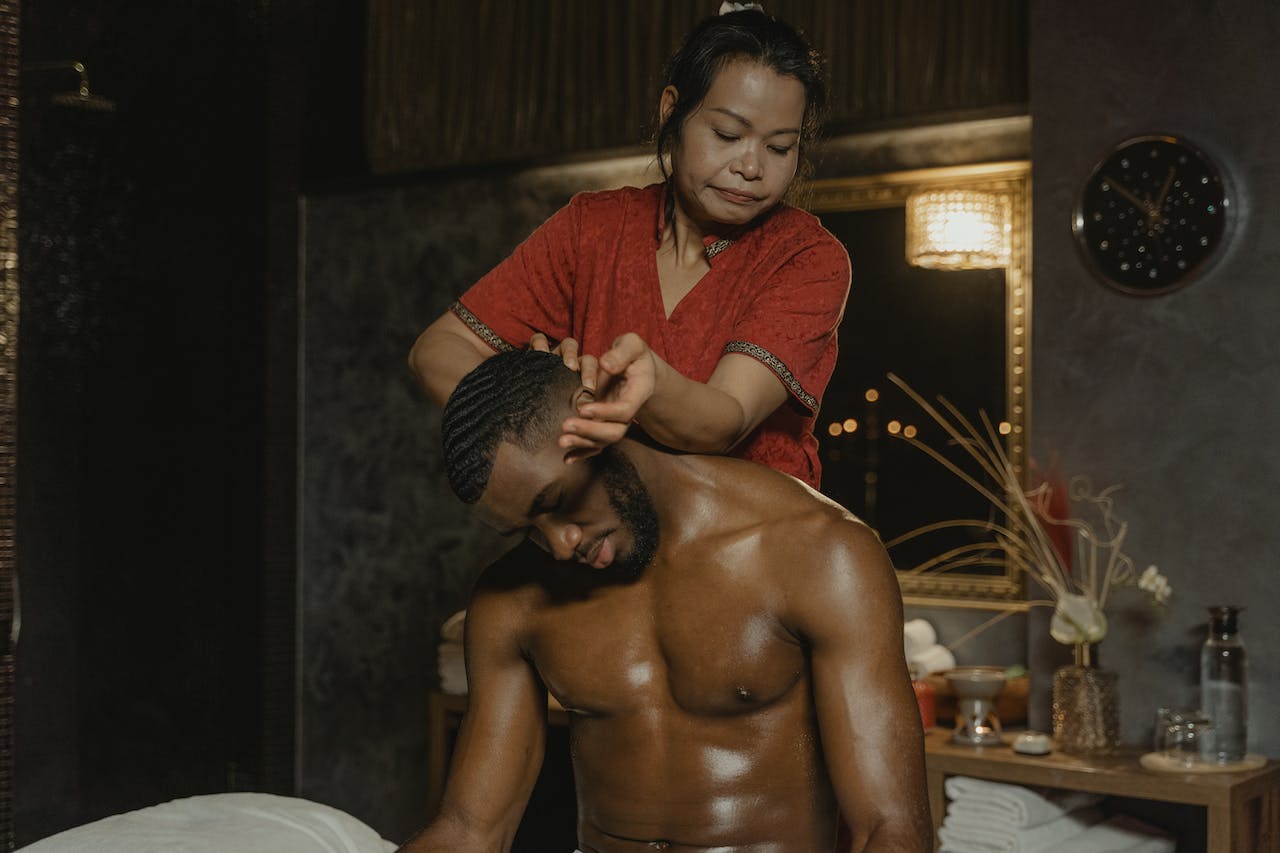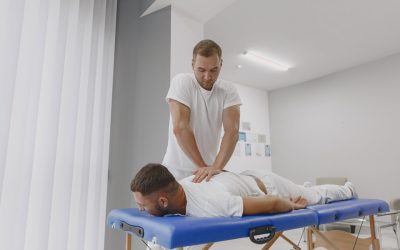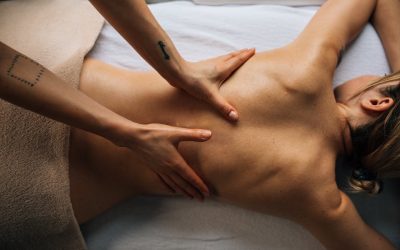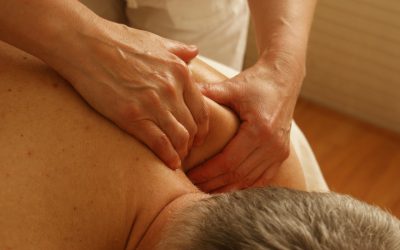Therapeutic massage plays a crucial role in the care and treatment of sports injuries. Not only does it provide relief from pain and discomfort, but it also promotes healing and enhances recovery for athletes. Understanding the benefits of therapeutic massage is vital for physical therapists and amateur athletes alike.
By targeting the soft tissues affected by sports injuries, such as muscles and tendons, therapeutic massage helps to reduce inflammation, improve blood circulation, and alleviate muscle tension. It can also break down scar tissue, enhance flexibility, and restore range of motion. However, there are certain do’s and don’ts that need to be followed to ensure its effectiveness.
Whether you are a professional therapist or an athlete seeking self-care techniques, these guidelines will help you make the most out of your sports injury massage sessions.
Understanding Sports Injury Care
Recognizing Different Pain Types
Identifying the type of pain is crucial. By recognizing different pain types, therapists can determine the most appropriate massage techniques to use. Acute pain, which is sharp and intense, usually indicates a recent injury. On the other hand, chronic pain is persistent and suggests long-term issues.
Being able to differentiate between acute and chronic pain allows therapists to tailor their treatment plans accordingly. For acute pain, gentle massage techniques that promote relaxation and reduce inflammation may be beneficial. Chronic pain often requires deeper tissue work to address underlying muscular imbalances or scar tissue.
Common Contraindications In Sports Massage
While therapeutic massage can be highly beneficial for sports injuries, there are certain conditions where caution must be exercised or where massage should be avoided altogether. These contraindications ensure safe and effective massages.
Some common contraindications in sports massage include open wounds, fractures, infections, and contagious skin conditions like ringworm or impetigo. Massaging over these areas could worsen the condition or spread infection. Deep tissue work should be avoided on areas with varicose veins or blood clots as it may dislodge a clot and cause serious complications.
By being aware of these contraindications before starting a massage session, therapists can ensure the safety and well-being of their clients.
Identifying Instances To Avoid Massage
In some cases, it’s important to avoid massaging certain areas of the body during sports injury care. Massaging over inflamed tissues or areas with severe pain can exacerbate the injury and delay healing. It’s essential for therapists to identify instances where avoiding massage is necessary.
For example, if an athlete has a sprained ankle with significant swelling and bruising, applying pressure through massage could further damage the tissues. Similarly, if someone has a muscle strain with acute pain, massaging directly over the injured area may cause more discomfort and prolong recovery time.
By recognizing when to avoid massage, therapists can prevent further harm and support the natural healing process. Instead, they can focus on other modalities like ice therapy or gentle range of motion exercises to promote healing.
Preparing For Effective Massage Therapy
Proper preparations before a massage session are crucial for maximizing the benefits of sports injury care. Here are some essential do’s and don’ts to consider:
Proper Pre-Massage Preparations
Before heading to your massage therapy appointment, it’s important to warm up your muscles with light exercises. This helps increase blood flow and prepares your body for the upcoming therapy. Taking a shower beforehand can help relax your muscles and improve blood circulation, making the massage more effective. By engaging in these pre-massage preparations, you set the stage for a successful therapeutic experience.
Nutrition And Hydration Tips
Maintaining a balanced diet that is rich in nutrients is vital for supporting tissue repair, especially when recovering from sports injuries. Consuming foods that are high in protein, vitamins, and minerals can aid in healing damaged tissues and promoting overall recovery. Staying hydrated before and after your massage session is essential as it helps flush out toxins from your body while keeping your muscles well-hydrated. Following proper nutrition and hydration tips ensures that you optimize the benefits of sports injury massages.
Relaxation Techniques Pre-Massage
Incorporating relaxation techniques before your massage session can greatly enhance the overall experience. Deep breathing exercises help calm both the body and mind, allowing you to fully relax during the therapy. Taking slow breaths in through your nose and exhaling deeply through your mouth can help release tension and promote a sense of tranquility. Another technique called progressive muscle relaxation involves tensing and then relaxing each muscle group in your body systematically. By practicing these relaxation techniques prior to receiving a massage, you create an environment where both your mind and body can fully unwind.
By implementing these do’s before a therapeutic sports massage session, you set yourself up for an effective healing experience that targets specific areas of concern while promoting overall wellness.
The Role Of The Sports Massage Therapist
Finding A Qualified Therapist
To ensure safe and effective sports injury massages, it is important to find a qualified therapist. When choosing a therapist, take the time to research their credentials, certifications, and experience. Look for therapists who have specialized training in sports massage or working with athletes. Seek recommendations from trusted sources such as healthcare professionals or other athletes who have had positive experiences with a particular therapist. By doing your due diligence in finding a qualified therapist, you can have peace of mind knowing that you are in good hands.
Education And Effective Therapy
Educating yourself about the benefits and techniques of sports injury massage is essential for maximizing the effectiveness of each session. Take the time to learn about how sports massage can help alleviate pain, reduce inflammation, improve flexibility, and enhance overall athletic performance. Understanding the therapy will also enable you to communicate your needs effectively to your therapist. If you have specific areas of concern or goals for your treatment, sharing this information with your therapist will allow them to tailor their approach accordingly. By combining education with effective therapy, you can make the most out of each session and achieve optimal results.
Professional Guidance VS. Self-Treatment
Knowing when to seek professional guidance versus self-treatment is crucial for optimal recovery from sports injuries. For complex or severe injuries, it is always best to consult a professional sports massage therapist or another healthcare provider who specializes in sports medicine. They will have the knowledge and expertise necessary to assess your condition accurately and provide appropriate treatment options tailored specifically to your needs.
However, for minor muscle soreness or general maintenance between sessions with your therapist, there are simple self-treatment techniques that can be used safely at home. These may include gentle stretching exercises, foam rolling, applying ice packs or heat pads as needed, and practicing proper rest and recovery techniques.
By understanding when it is appropriate to seek professional guidance versus utilizing self-treatment methods, you can ensure that you are taking the necessary steps for optimal recovery and injury care.
Essential Do’s For Sports Injury Massage
Managing Pain And Injury Recovery
Massage plays a crucial role in managing pain during sports injury recovery. It helps promote blood flow, reduces muscle tension, and releases endorphins, which are natural painkillers. Incorporating massage into injury recovery plans can significantly aid in pain management.
Preventing Workout Injuries
To prevent workout injuries, athletes should engage in proper warm-up exercises before their workouts. This helps prepare the body for physical activity and reduces the risk of strains or sprains. Stretching and strengthening muscles regularly can help maintain flexibility and stability, further reducing the chances of injuries occurring during exercise.
Incorporating 3R Physiotherapy
Rest, recovery, and rehabilitation (3R) are essential components of physiotherapy for sports injuries. Massage therapy plays a vital role in the recovery phase of 3R physiotherapy by promoting healing and reducing inflammation. By incorporating the principles of 3R physiotherapy into sports injury massages, therapists can enhance their effectiveness.
Sports massage therapists have a few important do’s to keep in mind when providing therapeutic massages for sports injuries:
1. Do communicate with the athlete: It is crucial to establish open communication with athletes to understand their specific needs, concerns, and goals regarding their injury recovery. This allows therapists to tailor the massage treatment accordingly.
2. Do assess the injury: Before starting any massage techniques, it is essential to assess the nature and severity of the injury thoroughly. This assessment helps determine which areas need attention and what techniques will be most beneficial.
3. Do use appropriate techniques: Different types of injuries may require different massage techniques. Therapists should be knowledgeable about various modalities such as Swedish massage, deep tissue massage, or trigger point therapy to provide targeted relief based on each athlete’s unique condition.
4. Do focus on affected areas: Concentrate on massaging the specific areas affected by the injury. This helps to alleviate pain, reduce swelling, and improve range of motion in those particular regions.
5. Do follow a treatment plan: Develop a comprehensive treatment plan that outlines the frequency and duration of massage sessions, as well as any additional therapies or exercises recommended for optimal recovery. Consistency is key to achieving desired results.
By following these essential do’s for sports injury massage, therapists can effectively manage pain, prevent further injuries, and support athletes in their journey towards recovery. Massage therapy, when integrated into an overall injury care plan, can greatly enhance the healing process and help athletes get back on track with their training and performance.
Critical Don’ts In Sports Massage
What To Avoid During Sessions
During a massage session, it is crucial to avoid excessive pressure that causes pain. The purpose of a therapeutic massage is to promote relaxation and healing, not to inflict discomfort. If you experience any unusual sensations or pain during the session, it is essential to communicate this to your therapist. Open communication ensures that the therapist can adjust their techniques or pressure accordingly, providing you with a safe and comfortable experience. Remember, your comfort and well-being should always be prioritized.
Post-Massage Activities To Skip
After a sports massage session, it is important to give your body time to rest and recover before engaging in intense physical activities. While massages help relax muscles and alleviate tension, they can also temporarily leave your body in a vulnerable state. Skipping post-massage activities that involve strenuous exercises prevents potential strain or re-injury. Instead, take the time to allow your body to absorb the benefits of the massage fully. Engaging in light stretching or gentle movements can be beneficial for maintaining flexibility without overexerting yourself.
Listening To Your Body’s Limitations
Listening to your body’s signals during a massage session is key for an effective therapeutic experience. Pay attention to any discomfort or pain you may feel and communicate this promptly with your therapist. They can make necessary adjustments based on your feedback, ensuring that the massage is tailored specifically for you. By voicing any limitations or concerns, you empower both yourself and the therapist in creating an optimal treatment plan. This personalized approach will enhance the effectiveness of the massage in addressing your specific needs.
Conclusion: Maximizing Benefits Of Sports Injury Massages
In conclusion, effective therapeutic massage plays a crucial role in sports injury care. By understanding the principles of sports injury care and preparing for massage therapy, athletes can maximize the benefits of their treatment. Sports massage therapists have a vital role in providing specialized care, utilizing essential do’s and avoiding critical don’ts to ensure optimal results.
To make the most of sports injury massages, athletes should seek out qualified and experienced sports massage therapists who understand the unique needs of their specific injuries. They should communicate openly with their therapist, providing accurate information about their condition and any changes they may be experiencing. Athletes should follow the therapist’s recommendations for pre- and post-massage care to enhance the effectiveness of the treatment.
By adhering to these guidelines and working closely with a knowledgeable sports massage therapist, athletes can optimize their recovery process and prevent future injuries. Remember, each individual’s needs may vary, so it is essential to consult a healthcare professional or trusted therapist for personalized advice. With proper care and attention, sports injury massages can be an invaluable tool in achieving peak performance and overall well-being.
Harnessing The Power Of Therapeutic Massage For Sports Injuries: Your Path To Recovery!
Are you struggling with the aftermath of a sports injury, feeling hampered by pain and limited mobility? Turn to the experts at MedicinEvolution, where the healing touch of Therapeutic Massage is expertly applied to target your sports-related injuries, offering a path to effective recovery! Wave goodbye to the discomfort caused by strained muscles, overexertion, and repetitive sports movements—as MedicinEvolution taps into the root causes of your injury, facilitating a transformative healing process. With their skilled approach, you’ll experience a remarkable turnaround from the pain that once hindered your athletic performance!
Whether you’re grappling with persistent pain, stiffness, or the frustrating limitations of a sports injury, their specialized methods are designed to meet the specific needs of your condition. Don’t let injury setbacks control your athletic journey—take the reins and schedule your session with MedicinEvolution today! Step into the realm of Therapeutic Massage and embark on a road to a more active, pain-free life. Your body—and your athletic aspirations—will be grateful!






0 Comments